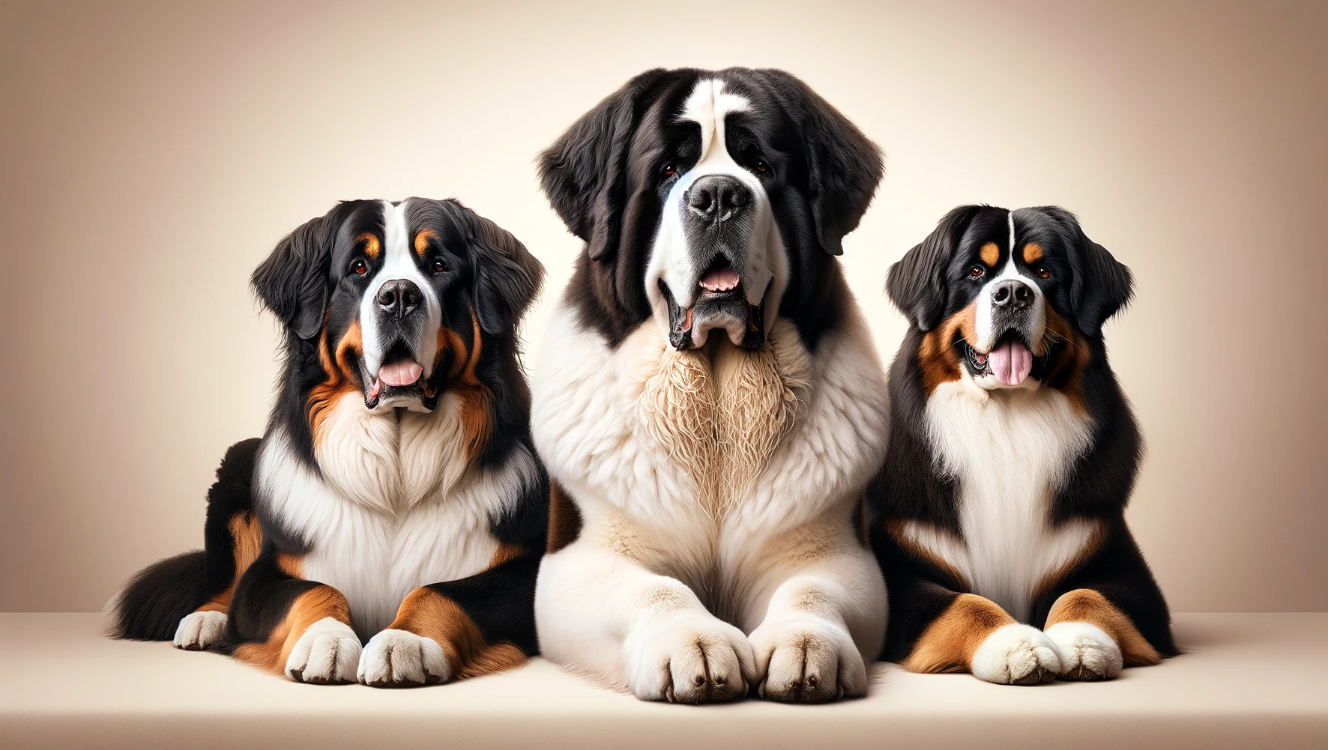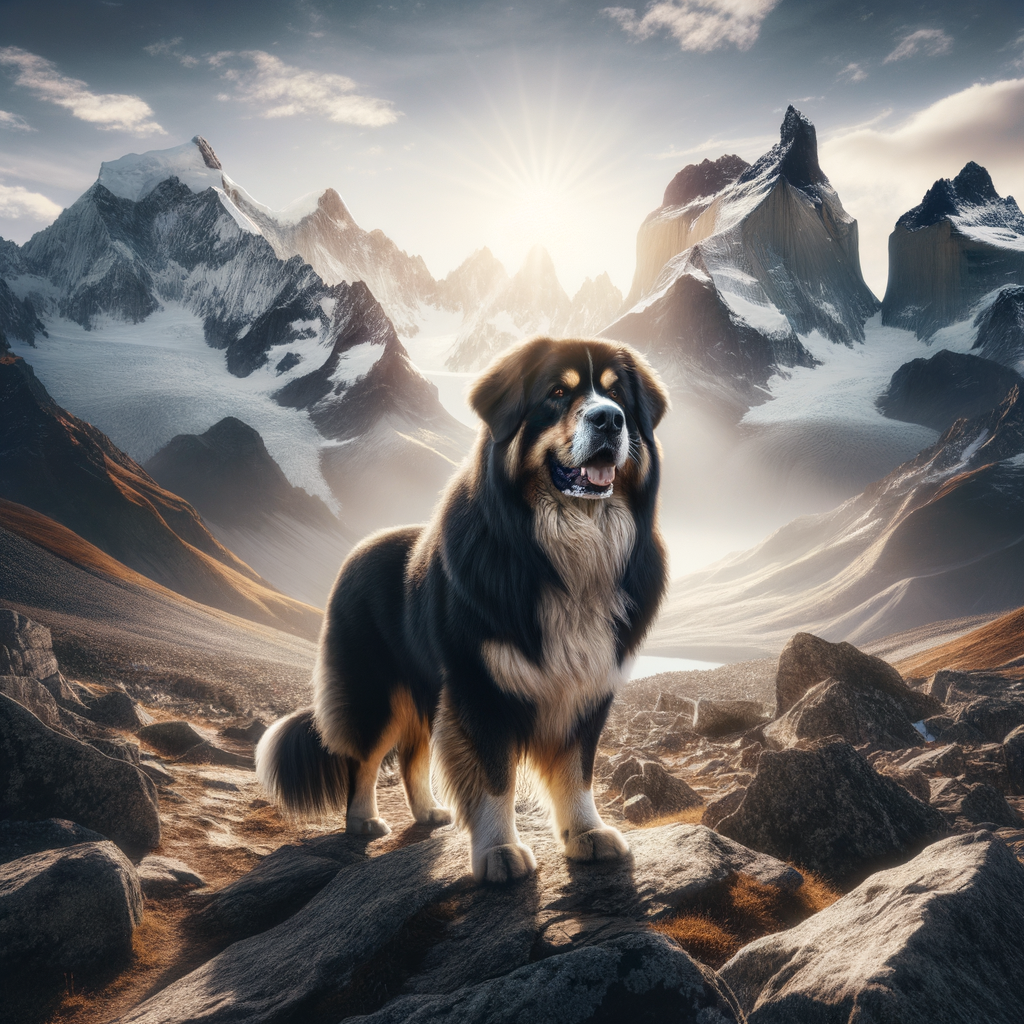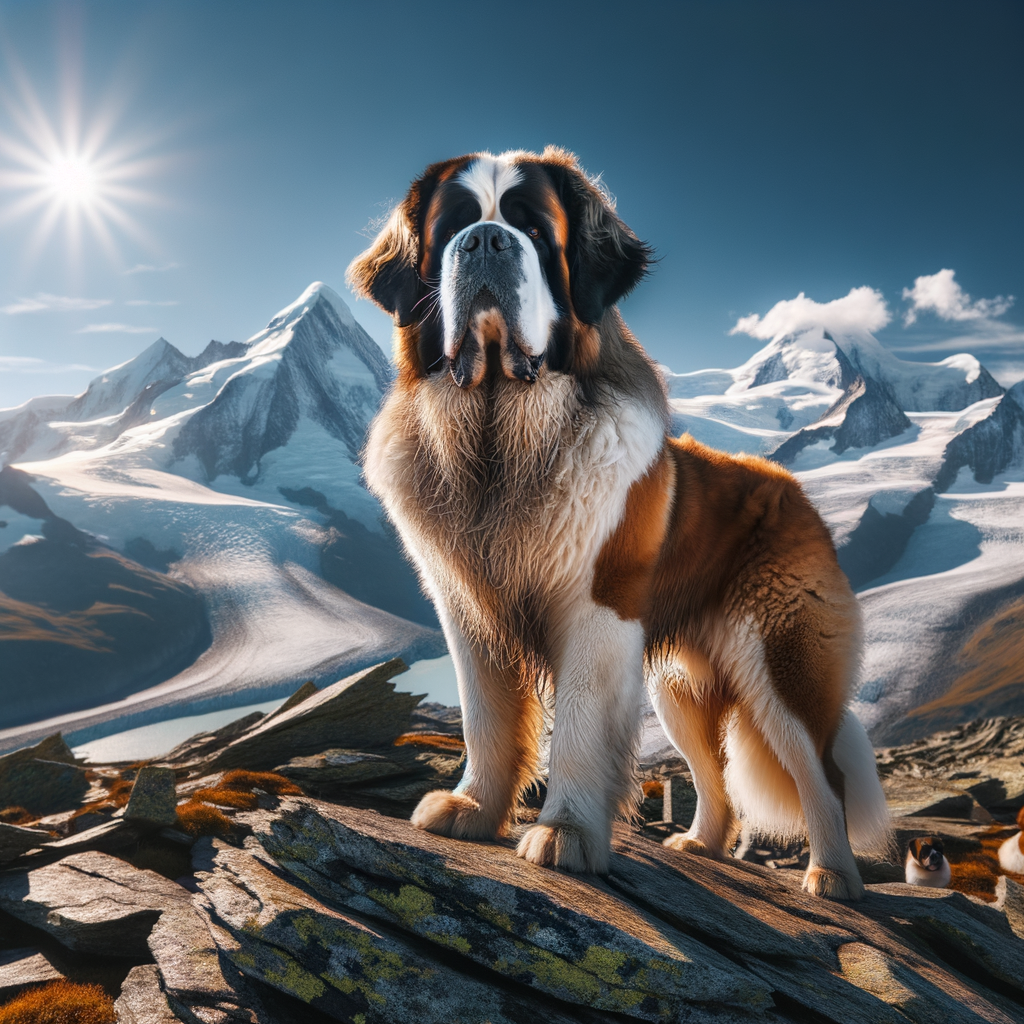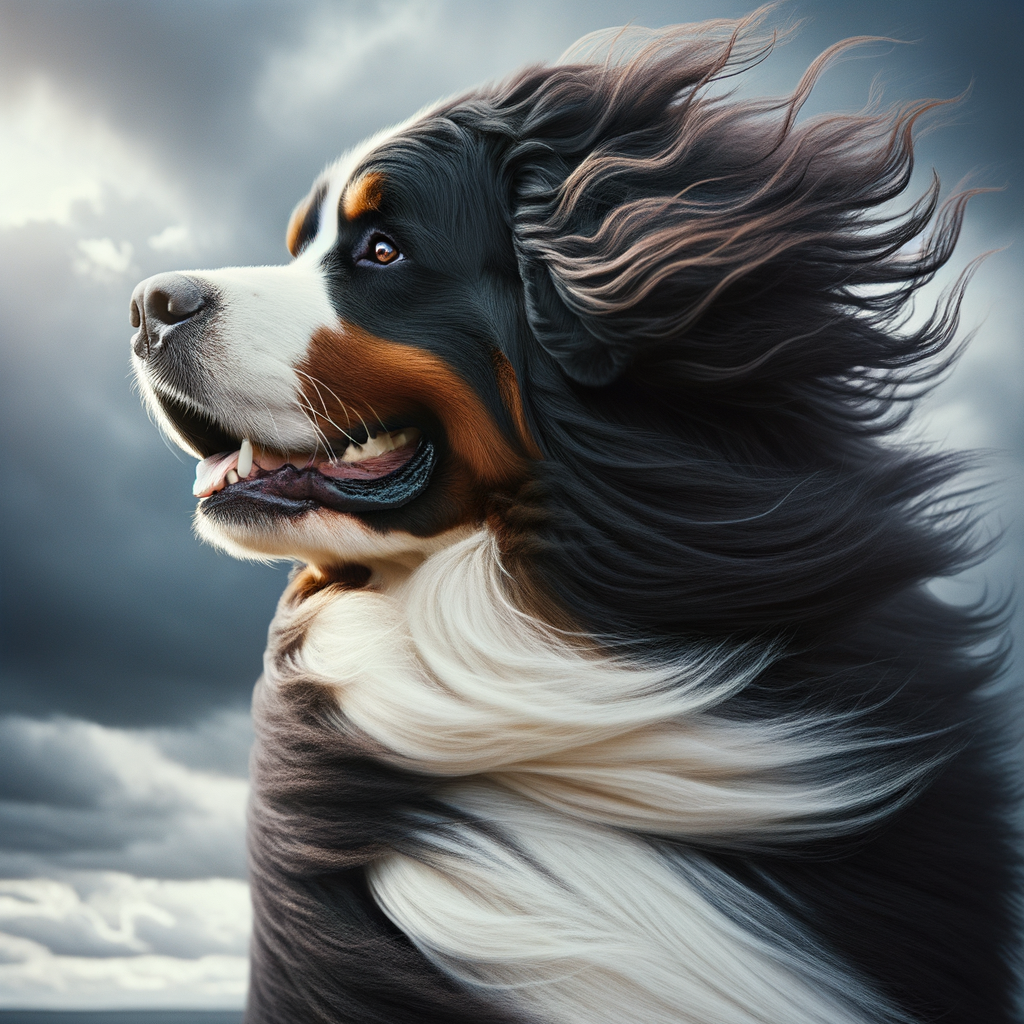When it comes to the canine kingdom, there are few that can match the strength, resilience, and majesty of mountain dog breeds. These formidable fur babies are much more than just appealing faces; they’re rugged and robust, ideal companions for outdoor enthusiasts, and amazing family pets. As a holistic veterinarian, I’ve had the pleasure of meeting and treating a wide variety of these majestic giants. Allow me to share my knowledge with you and help you understand the unique characteristics of these breeds.

Mountain dogs have been bred for centuries to work in the challenging conditions of mountainous regions. Their history is deeply intertwined with human culture, often serving as rescue dogs, protectors, and companions. For example, the Saint Bernard, with its keen sense of direction and smell, has been historically used to locate lost and injured travelers in the Swiss Alps. It’s fascinating to delve into the history and roles these breeds have played, as it offers valuable insights into their unique traits and behaviors.
One of the defining features of mountain dogs is their size. They are, without doubt, some of the largest breeds on the planet! But don’t let their size intimidate you; these gentle giants are known for their sweet disposition, loyalty, and protective nature. Whether it’s a Saint Bernard, a Bernese Mountain Dog, or a Greater Swiss Mountain Dog, each breed has its charm and individual quirks.
Let’s embark on this journey of getting to know 10 of the best mountain dog breeds. From understanding their health needs to appreciating their temperament, I’ll share a comprehensive listicle that will help you identify the breed that fits your lifestyle perfectly. So, stay tuned for an enlightening exploration of these majestic mountain dwellers!
Majestic Giants: Overview of Mountain Dog Breeds
Mountain dog breeds, the majestic giants of the canine world, possess distinct qualities that set them apart. Brimming with strength, endurance, and a gentle disposition, these breeds are true marvels of nature tailor-made to thrive in the harshest terrains. Let’s embark on a journey to explore the defining features of these wonderfully hardy canines and understand their role and importance in rugged terrains.
Defining Features of Mountain Dogs
Mountain dogs, often the size of small bears, are renowned for their impressive physique. But it’s more than just their size that defines this unique group of dogs. Here are some key features that make mountain dogs stand out:
- Size and Strength: Mountain dog breeds are generally large to giant-sized, with a sturdy and muscular build that equips them to navigate treacherous terrains and withstand harsh weather conditions.
- Coat: Most mountain dogs have thick, dense double coats that provide insulation against the chilling cold of high altitudes.
- Temperament: Despite their intimidating size, mountain dog breeds are usually gentle, loyal, and protective, with a calm demeanor.
- Endurance: Built for stamina rather than speed, these dogs have an innate ability to perform physically challenging tasks for extended periods.
Importance of Mountain Dogs in Rugged Terrains
Mountain dog breeds are not just beloved pets; they are also indispensable in mountainous regions. Their strength and endurance make them ideal for various tasks such as herding, search-and-rescue, carrying loads, and even avalanche recovery missions. Let’s delve into the roles of these breeds in rugged terrains:
Working Dogs: Many mountain dog breeds, such as the Saint Bernard and Bernese Mountain Dog, have a strong work ethic, often used for pulling carts, herding livestock, and performing other labor-intensive tasks.
Search and Rescue: Breeds like the Newfoundland and Saint Bernard are famed for their exceptional rescue abilities, particularly in snow. They have been known to locate and save people stranded in avalanches or lost in the wilderness.
Guard Dogs: The Tibetan Mastiff, a mountain dog breed that originated in the harsh climate of the Himalayas, is renowned as a protector. This breed has been used to guard herds, villages, and even palaces against wolves, leopards, and other threats.
Mountain dog breeds are truly magnificent creatures, their robust qualities honed by nature to withstand the most challenging environments. They stand testament to the enduring bond between humans and canines, serving as loyal companions, tireless workers, and vigilant protectors in mountainous regions. Understanding their unique traits and capabilities is the first step to being a responsible and loving mountain dog owner.

Top 10 Mountain Dog Breeds: A Comprehensive Listicle
As a dog lover, exploring diverse breeds is always an exciting adventure. Especially when it comes to Mountain Dog Breeds, the majestic giants known for their strength, resilience, and heart-warming loyalty. Here, we’ll delve into the top 10 mountain dog breeds, examining each breed’s unique traits and characteristics.
1. Saint Bernard
Originally bred for rescue in the Swiss Alps, the Saint Bernard is a gentle giant. This breed possesses a calm demeanor, coupled with a powerful build. Their size ranges from 140 to 180 pounds and they are known for their keen sense of direction and resistance to cold.
2. Bernese Mountain Dog
These Swiss natives are recognized by their tricolor coat and sturdy build. Bernese Mountain Dogs are friendly, intelligent, and great with families. They are versatile working dogs and have a lifespan of 6-8 years.
3. Tibetan Mastiff
Tibetan Mastiffs are ancient domesticated dogs known for their loyalty and protective nature. These dogs are quite large, with males reaching up to 150 pounds. They have a thick double coat, perfect for the mountainous regions they were bred in.
4. Newfoundland
The Newfoundland breed, or “Newfies,” as they are affectionately called, are natural swimmers. These dogs were originally used for water rescue. They possess a muscular build, webbed feet, and a unique double coat that helps keep them warm in cold water.
5. Greater Swiss Mountain Dog
Also known as “Swissies,” these dogs are the oldest and largest of the Swiss breeds. They were bred as herding, draft, and guard dogs. This breed is lauded for its strength, agility, and amiable nature.
6. Anatolian Shepherd
The Anatolian Shepherd is a Turkish breed, bred for guarding livestock. They are independent, hardy, and very protective, traits that make them excellent guard dogs.
7. Pyrenean Mastiff
This Spanish breed is known for its size and strength. Pyrenean Mastiffs are gentle, laid-back, and have a protective instinct, making them excellent family dogs.
8. Leonberger
The Leonberger is a German breed known for its lion-like appearance and friendly temperament. They are great swimmers and were often used for water rescues.
9. Maremma Sheepdog
Originating from Italy, the Maremma Sheepdog is a livestock guardian breed. They are known for their independent nature, protective tendencies, and adaptability to harsh climates.
10. Caucasian Shepherd Dog
The Caucasian Shepherd Dog, a Russian breed, is known for its large size and fur coat. They are fearless, strong, and were often used for guarding livestock against predators.
Each of these Mountain Dog Breeds holds a fascinating history and unique characteristics that make them suitable for different roles and environments. Whether you’re looking for a reliable guard dog, a resilient working dog, or a loyal family companion, these breeds offer a range of traits that could make them just the right fit for your lifestyle.
The Saint Bernard: A Gentle Giant
History and Origin of the Saint Bernard
The Saint Bernard is an iconic figure in the world of mountain dog breeds. Originating from the Swiss Alps, this majestic breed initially served as a working dog for the ancient Swiss Hospice. Monks bred and trained them for rescuing lost or injured travelers, a testament to their unparalleled strength and endurance.
The breed takes its name from the Great St. Bernard Pass, a treacherous alpine pathway where the dogs performed their rescue missions dating back to the 17th century. Their keen sense of direction, coupled with an extraordinary ability to sniff out trapped individuals under snow, made them invaluable lifesavers. These heroic exploits have earned the Saint Bernard a legendary status in alpine folklore.
Care and Maintenance for a Saint Bernard
Despite their colossal size and formidable reputation, Saint Bernards are known for their gentle and friendly nature. But owning one of these gentle giants requires proper care and maintenance.
- Diet: Saint Bernards require a diet high in quality protein and complex carbohydrates. Regularly feeding them balanced meals will help maintain their health and vitality.
- Exercise: While they may not demand vigorous exercise, Saint Bernards still benefit from regular moderate activity. A daily walk and occasional playtime can help keep them fit and happy.
- Grooming: Saint Bernards are heavy shedders and require frequent brushing to manage their thick double coat. Regular grooming also helps reduce the risk of skin ailments.
- Health Check-ups: Regular veterinary visits are crucial for this breed, as they are prone to certain health conditions like hip dysplasia and heart issues.
- Training: Although Saint Bernards are fairly easy to train due to their eager-to-please nature, early socialization is key to ensure they grow up to be well-rounded dogs.
- Living Space: Saint Bernards are not suited for apartment living due to their size. They need a spacious home with a secured yard to move around comfortably.
Remember, each Saint Bernard is unique and will have its own specific needs and personality traits. As a potential dog parent, your patience, love, and understanding will play a vital role in fostering a strong bond with your Saint Bernard.
In the realm of mountain dog breeds, the Saint Bernard indeed stands out as a gentle giant – a testament of strength, loyalty, and love that’s hard to match.

The Bernese Mountain Dog: A Hardy Companion
The Bernese Mountain Dog, also known as the Berner, is a large and powerful breed that originated in the Swiss Alps. Known for their striking tricolor coat and gentle demeanor, Bernese Mountain Dogs are one of the most beloved mountain dog breeds.
Understanding the Bernese Mountain Dog’s Temperament
The Bernese Mountain Dog is known for its calm and friendly temperament. These dogs are very sociable and love being around people. They are gentle with children, making them an excellent choice for families.
Despite their size, Berners are often described as gentle giants. They are not aggressive and are known for their patience and tolerance. However, they are also protective and will not hesitate to stand their ground if they sense a threat to their family.
One thing to note about the Berner’s temperament is their sensitivity. They don’t respond well to harsh training methods and need positive reinforcement to learn and grow. They are intelligent and eager to please, which makes training them a joy.
Health and Lifespan of Bernese Mountain Dogs
When it comes to health, Bernese Mountain Dogs are unfortunately prone to a number of genetic health issues. These include hip and elbow dysplasia, heart diseases, and certain types of cancer. Due to these health concerns, the average lifespan of a Bernese Mountain Dog is around 7-10 years, which is shorter than many other large breeds.
To ensure your Berner lives a long and healthy life, regular vet check-ups are essential. It’s also important to maintain a healthy diet and regular exercise routine. Berners are active dogs and need plenty of exercise to keep them physically and mentally stimulated.
Here are some key points to remember about the Bernese Mountain Dog:
- Temperament: Gentle, friendly, and protective. Great with families and children.
- Health Issues: Prone to hip and elbow dysplasia, heart diseases, and certain types of cancer.
- Lifespan: Generally, Berners live for about 7-10 years.
- Care: Regular vet check-ups, a balanced diet, and plenty of exercise are essential.
In conclusion, the Bernese Mountain Dog is a loving and loyal breed that makes a wonderful family pet. Their friendly and protective nature, combined with their striking appearance, make them a standout among mountain dog breeds. However, potential owners should be aware of the breed’s health issues and shorter lifespan, and be prepared to provide the care and attention these majestic dogs deserve.
The Tibetan Mastiff: A Majestic Protector
Of all the mountain dog breeds, perhaps none are as revered and historic as the Tibetan Mastiff. This breed, a true icon in the world of canines, is a perfect blend of majesty, courage, and tranquility.
The Tibetan Mastiff’s Role in Tibetan Culture
The Tibetan Mastiff, known as ‘Dok-Khyi’ in Tibet, translates to “dog that may be tied”, reflecting their traditional role as a guardian of herds, tents, villages, monasteries, and palaces. They are not just dogs; they are symbols of prestige and are deeply intertwined with Tibetan culture and history.
Their massive size, thick double-coat, and lion-like mane aren’t just for looks. These dogs were bred in the harsh climate of the Tibetan plateau, and these traits are adaptations to survive and protect in that environment. The Tibetan mastiff’s formidable appearance alone was often enough to deter potential threats.
In Tibetan folklore, they are considered as reincarnations of departed monks, adding a spiritual dimension to their existence. The Tibetan Mastiff is indeed more than a dog breed; it’s a living heritage of Tibet.
Training and Socialization of Tibetan Mastiffs
Training a Tibetan Mastiff can be both rewarding and challenging. It’s important to remember that they are an independent breed, bred for centuries to make their own decisions while guarding livestock and property. Therefore, they may not always be eager to follow commands like some other breeds.
It’s crucial to start their training and socialization at an early age. Puppies should be exposed to various environments, people, and other animals to grow into well-rounded dogs. Positive reinforcement techniques work best with this breed. Harsh methods may lead to stubbornness and resistance.
The Tibetan Mastiff is a nocturnal breed, naturally more active and alert at night. This could lead to unwanted nocturnal barking if not properly managed. Training them to understand when it’s appropriate to bark is essential.
As majestic protectors, Tibetan Mastiffs are full of love, loyalty, and a quiet confidence. They are gentle with their families, showing an immense understanding and sensitivity towards their human’s emotions. They are less of pets and more of companions, sharing your joys and sorrows, living every moment with you.
Being a Tibetan Mastiff parent is not just about owning a dog; it’s about preserving a tradition, a history, and above all, welcoming a loving protector into your family. Remember, with the right training and socialization, your Tibetan Mastiff can indeed be the majestic protector they’re known to be.
So, are you ready to embark on this unique journey with one of the most magnificent mountain dog breeds? It’s not just a commitment; it’s an honor.

The Newfoundland: A Gentle and Loyal Friend
The Newfoundland holds a special place in the pantheon of mountain dog breeds. These dogs are known for their gentle demeanor, unwavering loyalty, and miraculous swimming capabilities. Born and bred in the harsh environments of Canada’s Newfoundland, they are not just pets but were critical working dogs, playing a significant role within fishing communities.
The Newfoundland’s Swimming Capabilities
Among its many traits, the Newfoundland’s ability to swim stands out as truly remarkable. The breed’s webbed feet, strong muscles, and dense, waterproof coat equip them uniquely for swimming. These dogs were often utilized in water rescue operations, pulling nets for fishermen, and even pulling timber in logging operations.
In fact, they have a swimming stroke that is unique among canine breeds. Rather than the common dog paddle where the legs move in a running motion, Newfoundlands move their legs in a down-and-out motion, similar to a human doing the breaststroke. This, along with their large lung capacity, allows them to swim long distances without tiring.
The Newfoundland’s swimming prowess isn’t just for work – these dogs absolutely love to play in the water. So, if you’re a water enthusiast planning on getting one, be prepared for lots of splashy fun!
Grooming and Health Care for Newfoundlands
Newfoundlands possess a thick double coat that requires regular grooming to keep them looking their best and to avoid matting. Brushing their coat at least once a week is necessary, but during shedding seasons, more frequent grooming may be needed.
Their large size and heavy coat mean they can be susceptible to overheating in hot climates, so providing lots of shade and cool water is essential if you live in a warmer region.
Newfoundlands are generally healthy dogs but, like many large breeds, can be prone to certain health conditions. Some of these include hip dysplasia, heart conditions, and certain types of cancer. Regular vet check-ups, a balanced diet, and plenty of exercise will help keep your Newfoundland healthy and happy.
Remember, owning a Newfoundland – or any mountain dog breed – is not just about the responsibility. It’s about the joy, the companionship, and the unconditional love they bring into our lives. These dogs are gentle giants with hearts as big as their bodies, and owning one can be one of the most rewarding experiences in the world.
The Greater Swiss Mountain Dog: A Versatile Worker
As we delve deeper into the fascinating world of mountain dog breeds, let’s turn our focus to the Greater Swiss Mountain Dog. Often referred to as the “Swissies,” they’re hailed for their industrious spirit that’s inherent to their heritage.
The Greater Swiss Mountain Dog’s Work Ethic
The Greater Swiss Mountain Dog, true to its name, originated from the Swiss Alps where it was used as a working dog for various activities like herding, guarding, and drafting. With a rich lineage of hardworking ancestors, the Swissie has inherited an impressive work ethic. They’re known to be intelligent, diligent, and incredibly versatile. Whether it’s pulling carts, herding livestock, or acting as a loyal watchdog, Swissies perform their duties with commitment and a sense of purpose.
Despite their hardworking nature, Swissies are also known for their gentle and friendly disposition. Balancing their robust work ethic with an engaging personality makes them great companions, especially for active families who thrive in outdoor settings.
Dietary Needs and Exercise for Greater Swiss Mountain Dogs
Just like any other mountain dog breed, Greater Swiss Mountain Dogs have specific dietary and exercise needs to keep them healthy and active. They need a balanced diet rich in protein, carbohydrates, and healthy fats. Don’t be fooled by their large size; they’re not voracious eaters and tend to maintain a healthy weight with the right diet. However, they need constant access to fresh water—especially when they’re working or exercising.
Greater Swiss Mountain Dogs also require regular exercise to keep them physically and mentally stimulated. A good natured game of fetch, a brisk walk, or a hike are just a few ways you can keep your Swissie happy and healthy. Remember, these dogs love to work, so involving them in activities that stimulate their working instincts is always a good idea.
Swissies are ideal for those who appreciate the rustic charm and steadfast resilience of mountain dog breeds. They’re proof that strength and gentleness can coexist beautifully within a breed. Owning a Greater Swiss Mountain Dog is not just about having a pet; it’s about welcoming a hardworking, loyal companion into your life.
As we conclude our exploration of mountain dog breeds, remember that each breed, whether it’s the Saint Bernard, the Bernese Mountain Dog, the Tibetan Mastiff, the Newfoundland, or now, the Greater Swiss Mountain Dog, has unique strengths and characteristics. They all carry a rich history and a strong bond with the mountains in their DNA. So, when you select a mountain dog breed, you’re not just getting a pet; you’re getting a piece of history, a testament to man’s relationship with the natural world.
Frequently Asked Questions
Q1: What are some common mountain dog breeds?
Some common mountain dog breeds include the Bernese Mountain Dog, Saint Bernard, Greater Swiss Mountain Dog, and the Tibetan Mastiff.
Q2: Are mountain dog breeds suitable for apartment living?
Generally, mountain dog breeds are not suitable for apartment living. They are large, active dogs that require plenty of space and exercise.
Q3: What kind of climate is best for mountain dog breeds?
Mountain dog breeds are built for cold climates. They have thick coats that protect them from the cold, but can make them uncomfortable in hot weather.
Q4: How much exercise do mountain dog breeds need?
Mountain dog breeds are active and require regular exercise to stay healthy and happy. This can include walks, hikes, and playtime in a secure area.
Q5: Are mountain dog breeds good with children?
Yes, most mountain dog breeds are known for their gentle, friendly nature and do well with children. However, due to their size, they should always be supervised around small children.
Dr. Candy, a holistic veterinarian and certified raw dog food nutrition specialist, graduated from Oklahoma State University in 2009 with a DVM and has since specialized in companion animal nutrition, advocating for species-specific diets. With a background in wildlife rehabilitation and oil spill response, she combines holistic health and conventional medicine in her unique approach to treating chronic diseases, allergies, and autoimmune conditions in pets. As the owner of a veterinary practice in Colorado and an author, Dr. Candy is dedicated to educating pet parents and improving the health and happiness of animals.




